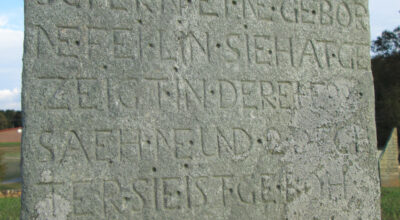Remembering the Salisbury tunnel
Published 12:00 am Monday, September 15, 2014
You say:”What tunnel?” “None exist in Salisbury! Trains, cars, and buses are above ground!” Not to worry; my “gist-getting” will be fairly brief after mentioning a few things.
Everyone is fascinated with the subterranean world (sometimes morbidly, as with cemeteries). Even before seeing the James Mason, Pat Boone movie “Journey to the Center of the Earth” (1959), I was fascinated with rocks and crystals.
I later received a rock and mineral “lab” for Christmas, styled like the old Chemcraft chemistry sets; but instead of bottles of chemicals, there were labeled rock samples. One, ”sphalerite” was ruby-amber colored, reminiscent of the beautiful underground sights witnessed by Professor Lindenbrook (James Mason) and company in the film.
I observed other “underground sights” around that time, as the late septic tank expert, Joe Green, opened up the “bowels of the earth” (you will never know whether or not this is an intended pun, because I’m not confessing).
The closest thing to a tunnel which I had seen prior to 1960 was a fallen, hollow tree in the forest behind my house. (Trees, then and there, reached the ground by “falling,” unlike the recent, en masse “felling.”)
A hollow tree trunk is sort of like a tunnel; just think about it. Imagine a tunnel, with a few surrounding inches of supporting soil pulled up out of the earth and laid on top of the ground.
I previously alluded to 1960 as being when I first saw a “real life” tunnel, not one from the movies, TV, or in a picture.
To the best of my memory, this was around the time when hovels were being removed in Salisbury’s “Dixonville” to make way for housing worthy of humanity. Any future child, growing up there and later activating his “mind’s eye” for recollection, would not have to view childhood memories in “substandard” framing.
I knew, even then (age 9) about Salisbury’s Confederate Prison, not the particulars, just that it existed before Stoneman burned it. (I didn’t know Stoneman’s name, just knew “Yankees did it!”)
We heard that when new water pipes were being laid, an old Union prisoner escape tunnel had been discovered close to the tracks on East Horah Street.
Our family went to see the tunnel, as did many people, a good number probably still with us.
I can still see that tunnel, buried in my mind.
Looking down, and lengthways (standard viewing for a tunnel; with a hole, you just look down), I saw just a few feet of its extent. If I had jumped in, I could have seen further, and explored a little; but like my fear of water, jumping into the earth doesn’t appeal to me. I’m not fond of heights either; so it might be said that I have some fear of matter’s three earthly states (liquid, solid, gas), particularly the possibility of becoming disoriented and lost within them.
Matter’s fourth state, “plasma,” is really no fun at all!
Besides, even if I had wanted to jump in, my family and the city employees present would have prevented me.
I saw roots dangling in that long-ago passage. In the film “The Time Machine” (1960), the time traveler states: “Time changes space.” He was right, because some of that “freed up,” early- to mid-1860s escape space had been replaced by tree roots over the course of almost a hundred years.
It reminded me a little of the then-current lead-in to television’s “Twilight Zone,” especially a mysterious picture of a cave with stalactites, except this was a tunnel with roots hanging from its roof.
I’m sure the city later filled in that part, but maybe other sections are still down there (in diametrically opposed directions). If so, 54 years have been added to what their age was then, and also to me or anyone else still living who saw it. (The year being 1960, only six years would be added [granted] to my father.)
I wondered then if those Union soldiers had achieved success with their tunnel, not just with its execution, but the overall reason for its existence. Even as a “li’l Reb,” I hoped so, for their sake. (I bet Clyde might know some facts, or have a good educated guess concerning their chances.)
As I gazed into the Union prisoners’ tunnel, another (and somewhat related) “escape” was going on close by, almost one hundred years post-digging.
The city of Salisbury, with “federal” help, was engineering an escape from substandard housing for the people of Dixonville.


